外研版英语选修八 Module 2 The Renaissance Reading & Vocabulary 课件(共52张PPT)
文档属性
| 名称 | 外研版英语选修八 Module 2 The Renaissance Reading & Vocabulary 课件(共52张PPT) | 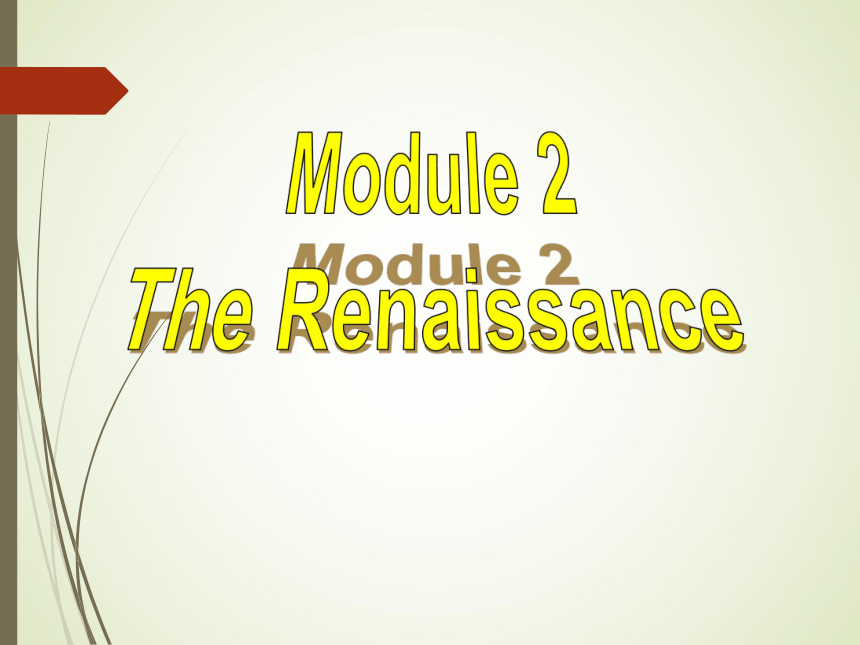 | |
| 格式 | zip | ||
| 文件大小 | 1.6MB | ||
| 资源类型 | 教案 | ||
| 版本资源 | 外研版 | ||
| 科目 | 英语 | ||
| 更新时间 | 2019-05-08 14:46:24 | ||
图片预览

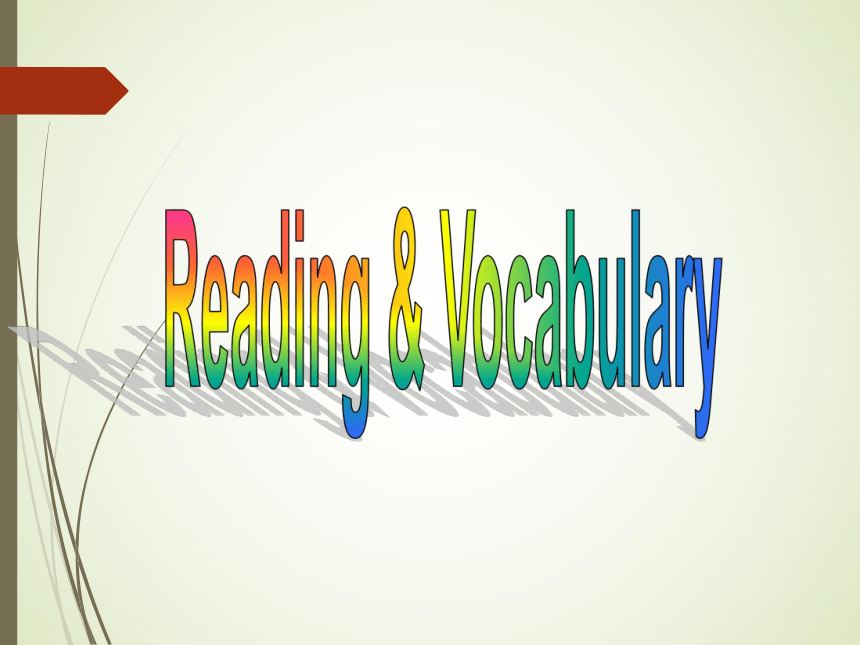
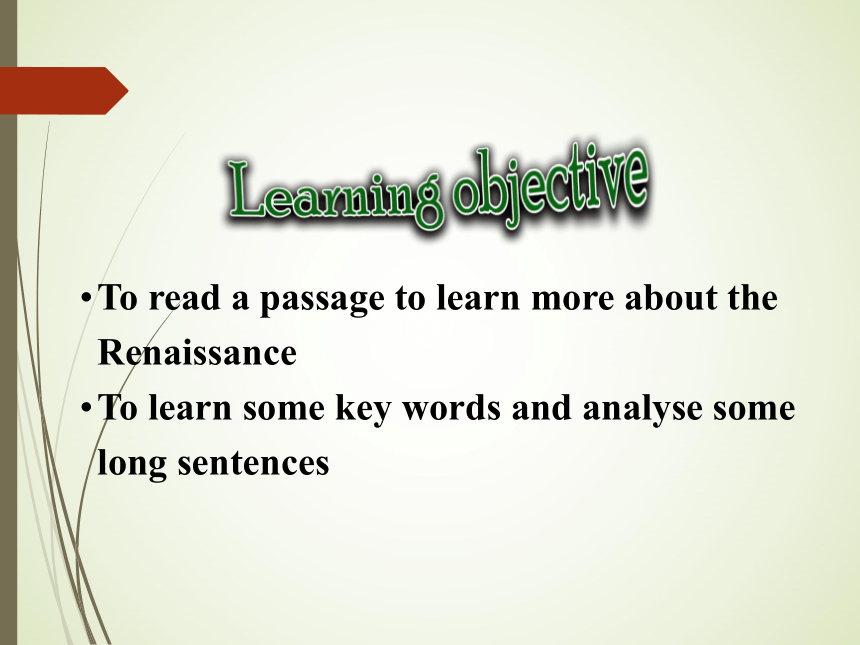
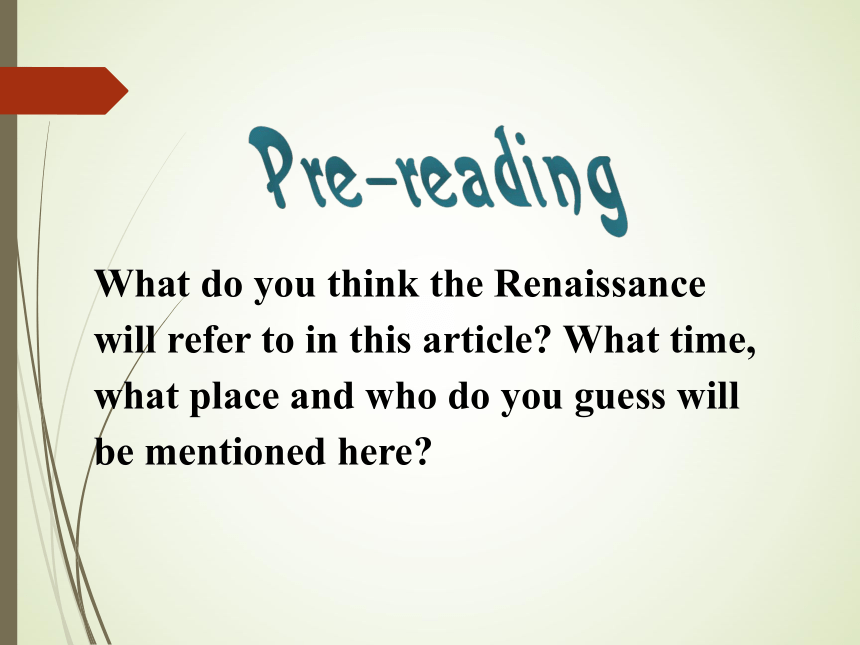
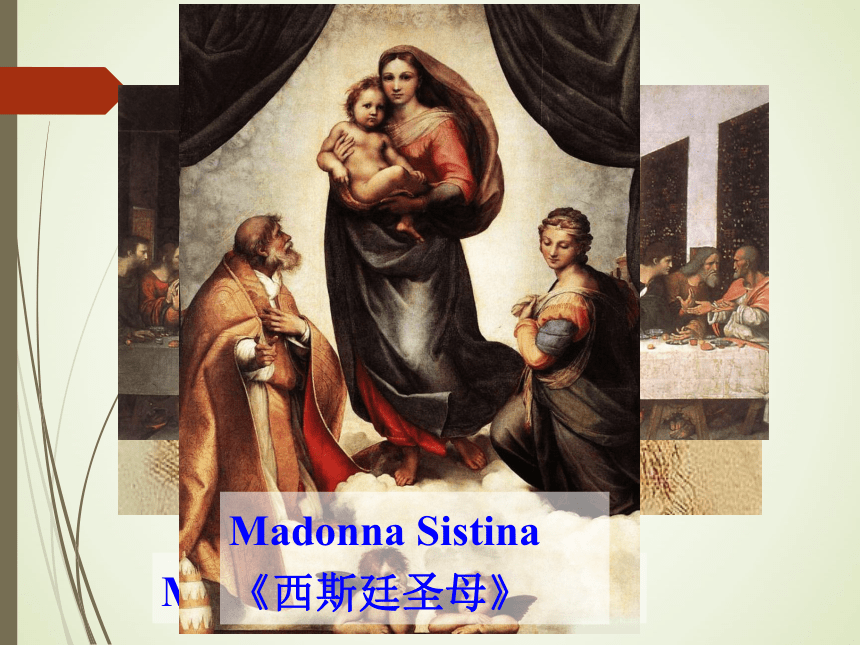
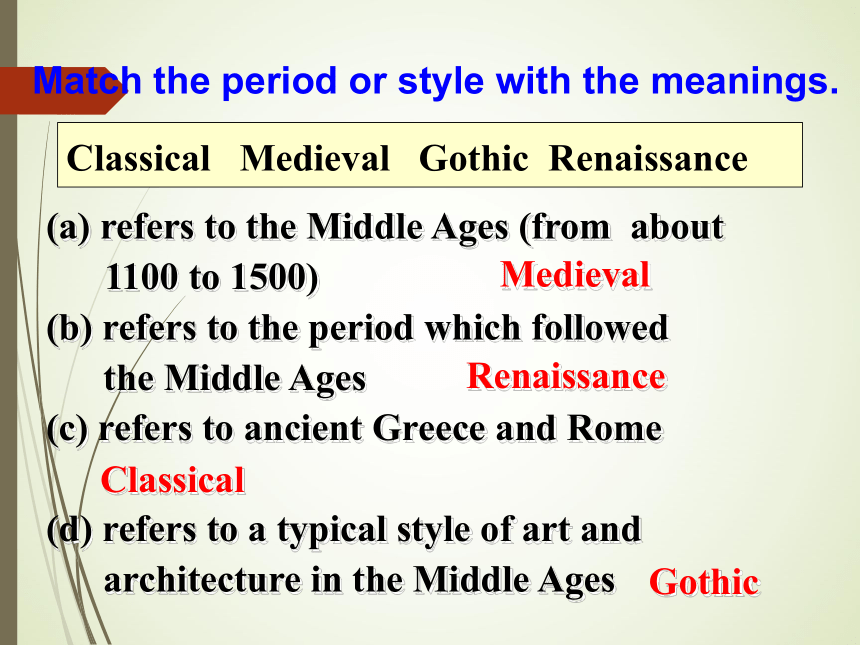
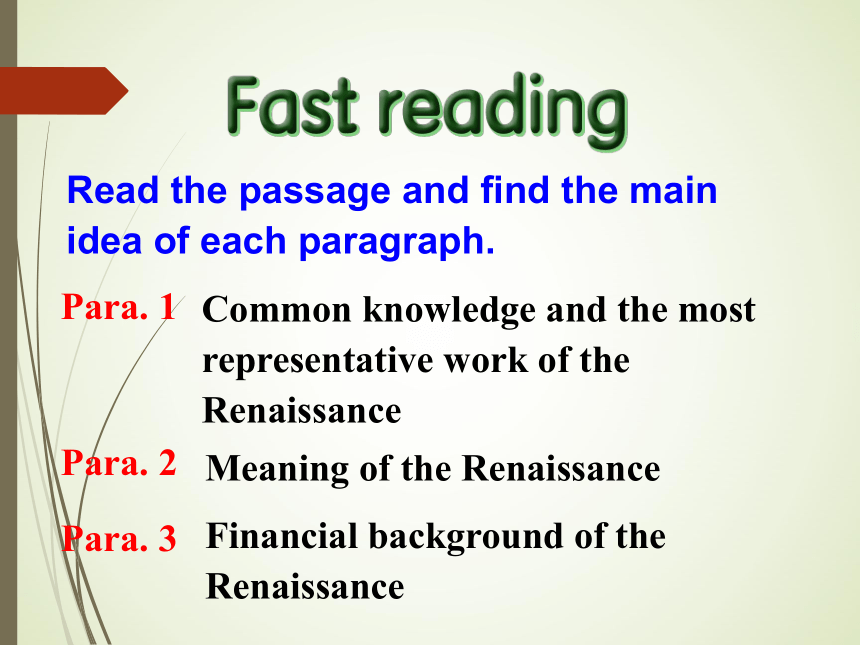


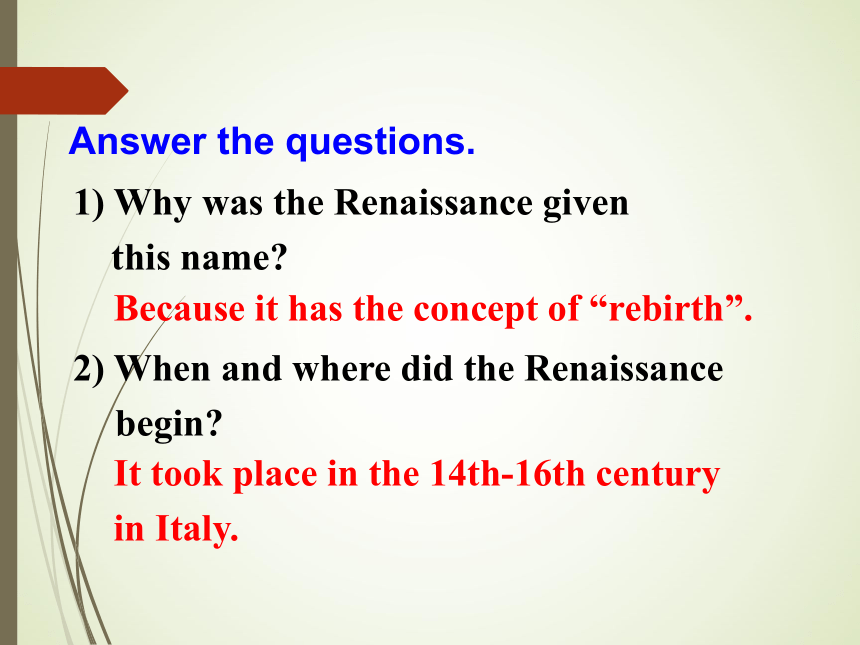
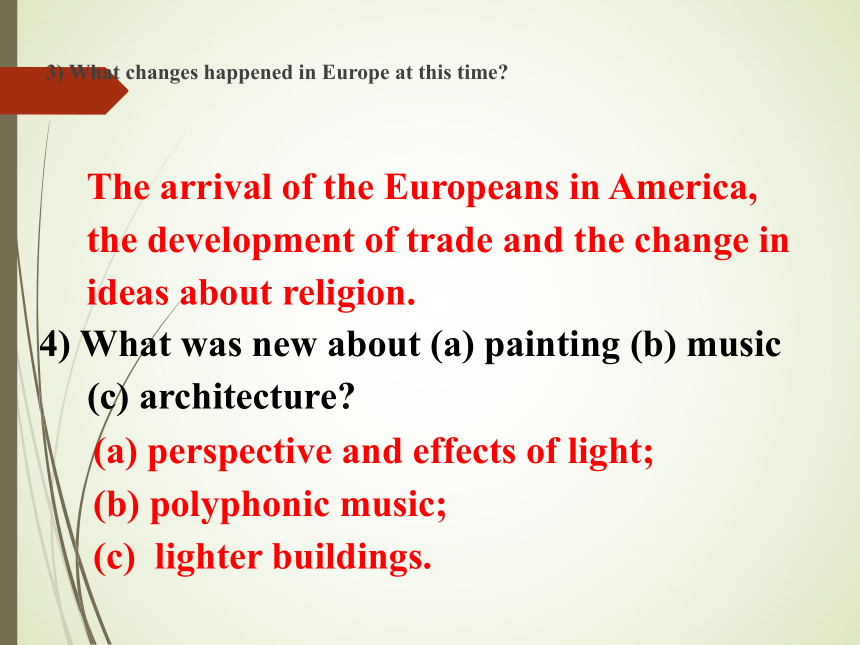
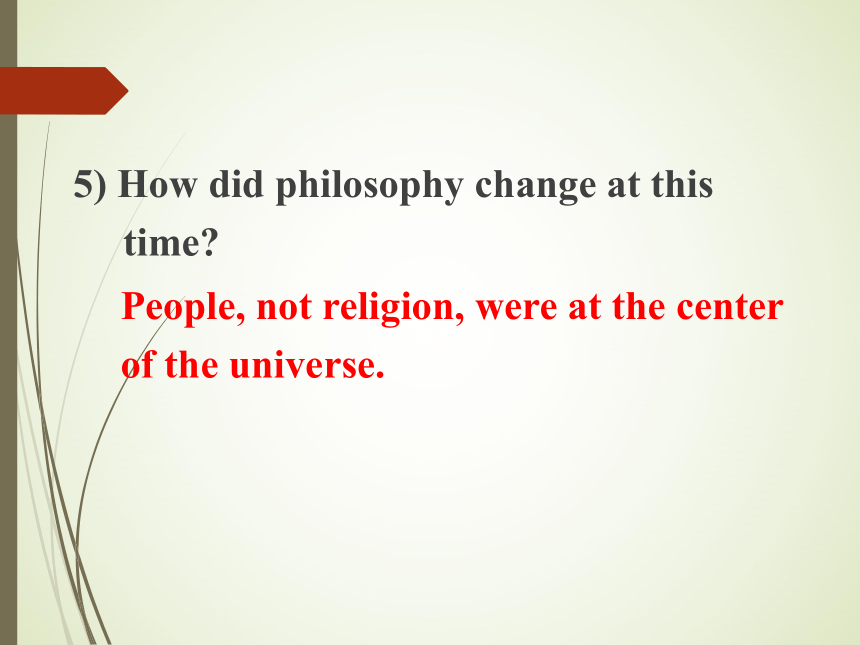
文档简介
课件52张PPT。Module 2
The RenaissanceReading & Vocabulary
To read a passage to learn more about the Renaissance
To learn some key words and analyse some long sentencesWhat do you think the Renaissance will refer to in this article? What time, what place and who do you guess will be mentioned here?Leonardo da Vinci The Last Supper《最后的晚餐》Michelangelo 米开朗基罗David 《大卫》 Raffaello (拉斐尔) Madonna Sistina 《西斯廷圣母》 (a) refers to the Middle Ages (from about 1100 to 1500)
(b) refers to the period which followed
the Middle Ages
(c) refers to ancient Greece and Rome
(d) refers to a typical style of art and
architecture in the Middle AgesMedieval Classical Medieval Gothic RenaissanceMatch the period or style with the meanings.Classical Gothic Renaissance Common knowledge and the most representative work of the RenaissanceRead the passage and find the main idea of each paragraph.Meaning of the Renaissance Financial background of the
RenaissancePara. 1Para. 2Para. 3Philosophical trend of the
RenaissanceLeonardo, an extraordinary
geniusArt developments of the renaissanceNew scientific inventions of the RenaissancePara. 4Para. 5Para. 6Para. 71) better living conditions
2) the discovery of the new world
3) international business
4) a change in ideas about religion
5) a change in climateRead the passage again and check the factors which made the Renaissance possible.Because it has the concept of “rebirth”.It took place in the 14th-16th century
in Italy.Answer the questions.1) Why was the Renaissance given
this name?2) When and where did the Renaissance begin?3) What changes happened in Europe at this time?The arrival of the Europeans in America, the development of trade and the change in ideas about religion. perspective and effects of light;
(b) polyphonic music;
(c) lighter buildings.4) What was new about (a) painting (b) music
(c) architecture?5) How did philosophy change at this time?People, not religion, were at the center of the universe.6) Why do people think Leonardo was an extraordinary genius as well as a great artist?Besides being a famous painter, he was also a skilled inventor, who was well-known for his astonishing drawings of a aeroplanes, parachutes, tanks and submarines.Read the text and fill in the blanks in the chart.The RenaissanceMeaning
and
example·14th-16th century Italy
·Development in art and 1. _____________, music and literature
·The Mona Lisa by Leonardo da VinciarchitectureThe RenaissanceWord origin
and the
beginning·French word meaning “ 2. ________ ”, describing the time when the first Europeans
arrived in America
·Waking up
·Spreading from Italy to the rest of 3. ________rebirthEuropeThe RenaissanceInternational
tradePeople had money to buy art works, or 4. ________ the artists to work for themNew areas·Painters — how to use 5. __________ and the effect of light
·Composers — creating 6. ____________
·Architects — designing buildings with more lightemployperspectivepolyphonyThe RenaissanceNew
philosophy·What is a person?
·Why am I here?
·Putting 7. ________, not religion, at the centre of the universePlans for engineers to build canals and 8. ________, drawings of machines, such as
aeroplanes, parachutes, 9. ___________ and tanksScientific
inventionpeoplebridgessubmarinesThe RenaissanceComment
on
Leonardo·An extraordinary 10. ________
·Renaissance man
·Interested in everything and with many talents
·Genius for all timegeniusRead the passage again and decide the following sentences true or false. 1. The word Renaissance coming from
French first appeared in English in the 18th century.F2. Renaissance was used to describe a period in European history and considered as the beginning of the modern world.
3. Renaissance artists found new ideas
for their work in classical Italy.TF4. Leonardo da Vinci was known as “Renaissance man” because he could do many things well.
5. During the period of Renaissance the focus of philosophic thinking shifted from God to man. TT1) …the Mona Lisa is a mysterious masterpiece.
2) It was as if Europe was waking up after the long sleep of the Middle Ages.
3) Renaissance artists found new ideas for their work in classical Greece and Rome.O ODecide if these sentences from the
passage are facts (F) or opinions (O).F4. The Renaissance was a time of scientific invention, too.
5. But even if his only contribution to history had been the Mona Lisa, it would have been genius enough for all time. OFNow find more examples of fact and opinion in the passage.Below is the summary of the text with some words or phrase missing. Choose the words or phrase from the box and make the summary complete.arts, Europe, literature, machines, people,
perspective, rebirth, the Middle Ages For many people the Renaissance means advances in art, architecture, music and 1. _________ in 14th and 16th century Italy, from where it spread to the rest of 2. ________. literatureEuropearts, Europe, literature, machines, people,
perspective, rebirth, the Middle AgesRenaissance is a French word meaning “3. ________”and the Renaissance can be seen as a time when Europe was waking up from the long sleep of 4. _________. rebirththe Middle Agesarts, Europe, literature, machines, people,
perspective, rebirth, the Middle AgesWorld exploration and trade meant Europeans became richer and had more time and money to spend on the 5. _________. Renaissance artists looked back to classical Greece and Rome for inspiration and forward to exploring 6. __________ and light. artsperspectivearts, Europe, literature, machines, people,
perspective, rebirth, the Middle AgesIt was a time when philosophers started putting 7. _________ before religion and also a time of invention. Leonardo da Vinci, famous for painting the Mona Lisa, was also an inventor, drawing 8. _________ that would not be built until centuries later. He is an example of a “Renaissance man”, a talented person with many interests.machinespeople1. But there is one work which, perhaps more than any other…
但有一件作品可能比其他的任何作
品……
1) more than “极其……; 非常……”, 后跟形容词或过去分词。e.g. They were more than glad to offer their help. (翻译)
他们非常愿意提供帮助。
I’m more than satisfied to hear of the news. (翻译)
听到这个消息我极其高兴。2) more than one / a + 名词 + 单数动词,
意为“不止一个…… ” 。
e.g. More than one boy is invited to the
dinner.
不止一个少年被邀请参加晚宴。3) no more than 只有 (强调数量少)
e.g. No more than 15 scientists have
visited the South Pole.
只有15位科学家到过南极。4) not more than 意为“至多”, 陈述事实, 不说明数量少。
e.g. There are not more than 15 scientist
at the conference.
会上只有15位科学家。5) more than 意为“不只是, 不仅仅是”,
表示程度超过。
e.g. He is more than a writer, he cares
about human rights. (翻译)
他不仅仅是一位作家, 他还关注着人
权问题。6) more... than… 意为“与其说......倒不如说......”。
e.g. He was ________________________.
与其说他受伤, 倒不如说他吓得不
轻。more frightened than hurt7) no more+形容词/副词的原级+ than, 意为“两者都不……”。
e.g. This film is no more interesting than
that one.
= Neither of the films is interesting.
= Neither this film nor that one is
interesting.
这两部电影都没有趣。8) not more than, “前者不如后者”
e.g. This film is not more interesting
than that one.
= This film is less interesting than
that one.
这部电影没有那部电影有意思。2. The sense of exploration which motivated the artists went hand in hand with a new type of philosophy.
这种激发艺术家的探索意识与一种新型的人生哲学携手共进。
motivate v. 作为……的动机, 激发……的兴趣, 使欲做某事e.g. How do you motivate people to work
hard and efficiently? 你是如何激发
人们努力而有效地工作呢?motivation n. 动机;动力;诱因
e.g. His poor performance may be attributed to lack of motivation rather than to reading difficulties.
他不好的表现可能归因于缺少动力,而不是阅读上的困难。3. They included detailed drawings of the
human body,…
这些包括人体的细致素描,……
1) detail n. 细目; 细节; 详情
in detail 详细的
go into detail(s) 详细叙述
e.g. He refused to go into details about his
plans.
他不肯详述他的计划。2) detail v. 逐项列出; 详述某事物
e.g. The computer’s features are detailed
in our brochure.
该计算机的特点在我们的小册子中
有详细介绍。
I detailed our plan to her.
我向她详细讲述了我们的计划。3) detailed adj. 详细的; 极注意细节的;
详尽的; 完全的
e.g. More detailed information is
available on request.
应要求有更详尽的可以利用的信息。4. This meant that people had money to spend on the arts; and it became easier for artists to find people who could afford to buy their works or employ them.? ??
【分析】
①本句是一个由and连接的并列复合句;②在and前的分句中,that引导的从句作meant的宾语;to spend on the arts是不定式短语作后置定语,修饰________;
③在and后的分句中,it作形式主语,真正的主语是for artists to find people;who引导定语从句,修饰people。money 【句意】这意味着人们有钱花在艺术上,对于艺术家们来说,找到能买得起他们的作品或者雇佣得起他们的人变得更容易了。
【仿写】这意味着我将有更多的机会练习我的英语口语,对于我来说,找到英语讲得流利的人变得更容易了。
This means I will have more chances to practice my spoken English; and it will become easier for me to find people who speak English fluently.5. After centuries of accepting a medieval world view in which human life was considered of little value compared with the greatness of God, philosophers began asking questions like “What is a person?” or “Why am I here?”??????
【分析】
①本句是一个主从复合句;②philosophers began ...?“Why am I here?”是主句;
③After centuries of ... God是时间状语,其中的in which ... God是“介词+关系代词”引导的定语从句,修饰先行词____________________;compared with the greatness of God是动词-ed形式短语作状语。medieval world view【句意】几个世纪以来,哲学家们都持有中世纪的世界观,认为与上帝的伟大相比人的生命很渺小。此时他们开始提出诸如“人为何物?”以及“我为何存在?”这样的问题。
【仿写】在当今时代, 相比于其它才能, 一个人的创造力被认为更为重要。
Now is the age in which one's creativity is considered more important compared with other abilities.根据汉语意思补全下面句子(每空一词)。
1.?在他生命的最后,他创作了更为抽象的艺术作品。
_______ _______ _______ _______ _______ _______, he created more abstract artwork.?
2.?除了给病人看病,医生们也做科学研究。
Besides giving the patients medical treatment, the doctors also _______ ________ ________.Towards the end of hisscientific research life do3.?我们必须激励学生管好自己的学习。
We must ________ ________ ________ take charge of their own learning.
4.?总之,他是一个有希望、有光明前途的青年。
________ ________, he is a promising young man and has a bright future.
5.?这个组织给穷人提供帮助,也为当地的慈善团体筹款。
The organisation gives help to poor people, ________ ________ ________ raising money for local charities.motivate students to In short as well as 1. Review language points.
2. Finish Exercises 4-6 on page 98.
The RenaissanceReading & Vocabulary
To read a passage to learn more about the Renaissance
To learn some key words and analyse some long sentencesWhat do you think the Renaissance will refer to in this article? What time, what place and who do you guess will be mentioned here?Leonardo da Vinci The Last Supper《最后的晚餐》Michelangelo 米开朗基罗David 《大卫》 Raffaello (拉斐尔) Madonna Sistina 《西斯廷圣母》 (a) refers to the Middle Ages (from about 1100 to 1500)
(b) refers to the period which followed
the Middle Ages
(c) refers to ancient Greece and Rome
(d) refers to a typical style of art and
architecture in the Middle AgesMedieval Classical Medieval Gothic RenaissanceMatch the period or style with the meanings.Classical Gothic Renaissance Common knowledge and the most representative work of the RenaissanceRead the passage and find the main idea of each paragraph.Meaning of the Renaissance Financial background of the
RenaissancePara. 1Para. 2Para. 3Philosophical trend of the
RenaissanceLeonardo, an extraordinary
geniusArt developments of the renaissanceNew scientific inventions of the RenaissancePara. 4Para. 5Para. 6Para. 71) better living conditions
2) the discovery of the new world
3) international business
4) a change in ideas about religion
5) a change in climateRead the passage again and check the factors which made the Renaissance possible.Because it has the concept of “rebirth”.It took place in the 14th-16th century
in Italy.Answer the questions.1) Why was the Renaissance given
this name?2) When and where did the Renaissance begin?3) What changes happened in Europe at this time?The arrival of the Europeans in America, the development of trade and the change in ideas about religion. perspective and effects of light;
(b) polyphonic music;
(c) lighter buildings.4) What was new about (a) painting (b) music
(c) architecture?5) How did philosophy change at this time?People, not religion, were at the center of the universe.6) Why do people think Leonardo was an extraordinary genius as well as a great artist?Besides being a famous painter, he was also a skilled inventor, who was well-known for his astonishing drawings of a aeroplanes, parachutes, tanks and submarines.Read the text and fill in the blanks in the chart.The RenaissanceMeaning
and
example·14th-16th century Italy
·Development in art and 1. _____________, music and literature
·The Mona Lisa by Leonardo da VinciarchitectureThe RenaissanceWord origin
and the
beginning·French word meaning “ 2. ________ ”, describing the time when the first Europeans
arrived in America
·Waking up
·Spreading from Italy to the rest of 3. ________rebirthEuropeThe RenaissanceInternational
tradePeople had money to buy art works, or 4. ________ the artists to work for themNew areas·Painters — how to use 5. __________ and the effect of light
·Composers — creating 6. ____________
·Architects — designing buildings with more lightemployperspectivepolyphonyThe RenaissanceNew
philosophy·What is a person?
·Why am I here?
·Putting 7. ________, not religion, at the centre of the universePlans for engineers to build canals and 8. ________, drawings of machines, such as
aeroplanes, parachutes, 9. ___________ and tanksScientific
inventionpeoplebridgessubmarinesThe RenaissanceComment
on
Leonardo·An extraordinary 10. ________
·Renaissance man
·Interested in everything and with many talents
·Genius for all timegeniusRead the passage again and decide the following sentences true or false. 1. The word Renaissance coming from
French first appeared in English in the 18th century.F2. Renaissance was used to describe a period in European history and considered as the beginning of the modern world.
3. Renaissance artists found new ideas
for their work in classical Italy.TF4. Leonardo da Vinci was known as “Renaissance man” because he could do many things well.
5. During the period of Renaissance the focus of philosophic thinking shifted from God to man. TT1) …the Mona Lisa is a mysterious masterpiece.
2) It was as if Europe was waking up after the long sleep of the Middle Ages.
3) Renaissance artists found new ideas for their work in classical Greece and Rome.O ODecide if these sentences from the
passage are facts (F) or opinions (O).F4. The Renaissance was a time of scientific invention, too.
5. But even if his only contribution to history had been the Mona Lisa, it would have been genius enough for all time. OFNow find more examples of fact and opinion in the passage.Below is the summary of the text with some words or phrase missing. Choose the words or phrase from the box and make the summary complete.arts, Europe, literature, machines, people,
perspective, rebirth, the Middle Ages For many people the Renaissance means advances in art, architecture, music and 1. _________ in 14th and 16th century Italy, from where it spread to the rest of 2. ________. literatureEuropearts, Europe, literature, machines, people,
perspective, rebirth, the Middle AgesRenaissance is a French word meaning “3. ________”and the Renaissance can be seen as a time when Europe was waking up from the long sleep of 4. _________. rebirththe Middle Agesarts, Europe, literature, machines, people,
perspective, rebirth, the Middle AgesWorld exploration and trade meant Europeans became richer and had more time and money to spend on the 5. _________. Renaissance artists looked back to classical Greece and Rome for inspiration and forward to exploring 6. __________ and light. artsperspectivearts, Europe, literature, machines, people,
perspective, rebirth, the Middle AgesIt was a time when philosophers started putting 7. _________ before religion and also a time of invention. Leonardo da Vinci, famous for painting the Mona Lisa, was also an inventor, drawing 8. _________ that would not be built until centuries later. He is an example of a “Renaissance man”, a talented person with many interests.machinespeople1. But there is one work which, perhaps more than any other…
但有一件作品可能比其他的任何作
品……
1) more than “极其……; 非常……”, 后跟形容词或过去分词。e.g. They were more than glad to offer their help. (翻译)
他们非常愿意提供帮助。
I’m more than satisfied to hear of the news. (翻译)
听到这个消息我极其高兴。2) more than one / a + 名词 + 单数动词,
意为“不止一个…… ” 。
e.g. More than one boy is invited to the
dinner.
不止一个少年被邀请参加晚宴。3) no more than 只有 (强调数量少)
e.g. No more than 15 scientists have
visited the South Pole.
只有15位科学家到过南极。4) not more than 意为“至多”, 陈述事实, 不说明数量少。
e.g. There are not more than 15 scientist
at the conference.
会上只有15位科学家。5) more than 意为“不只是, 不仅仅是”,
表示程度超过。
e.g. He is more than a writer, he cares
about human rights. (翻译)
他不仅仅是一位作家, 他还关注着人
权问题。6) more... than… 意为“与其说......倒不如说......”。
e.g. He was ________________________.
与其说他受伤, 倒不如说他吓得不
轻。more frightened than hurt7) no more+形容词/副词的原级+ than, 意为“两者都不……”。
e.g. This film is no more interesting than
that one.
= Neither of the films is interesting.
= Neither this film nor that one is
interesting.
这两部电影都没有趣。8) not more than, “前者不如后者”
e.g. This film is not more interesting
than that one.
= This film is less interesting than
that one.
这部电影没有那部电影有意思。2. The sense of exploration which motivated the artists went hand in hand with a new type of philosophy.
这种激发艺术家的探索意识与一种新型的人生哲学携手共进。
motivate v. 作为……的动机, 激发……的兴趣, 使欲做某事e.g. How do you motivate people to work
hard and efficiently? 你是如何激发
人们努力而有效地工作呢?motivation n. 动机;动力;诱因
e.g. His poor performance may be attributed to lack of motivation rather than to reading difficulties.
他不好的表现可能归因于缺少动力,而不是阅读上的困难。3. They included detailed drawings of the
human body,…
这些包括人体的细致素描,……
1) detail n. 细目; 细节; 详情
in detail 详细的
go into detail(s) 详细叙述
e.g. He refused to go into details about his
plans.
他不肯详述他的计划。2) detail v. 逐项列出; 详述某事物
e.g. The computer’s features are detailed
in our brochure.
该计算机的特点在我们的小册子中
有详细介绍。
I detailed our plan to her.
我向她详细讲述了我们的计划。3) detailed adj. 详细的; 极注意细节的;
详尽的; 完全的
e.g. More detailed information is
available on request.
应要求有更详尽的可以利用的信息。4. This meant that people had money to spend on the arts; and it became easier for artists to find people who could afford to buy their works or employ them.? ??
【分析】
①本句是一个由and连接的并列复合句;②在and前的分句中,that引导的从句作meant的宾语;to spend on the arts是不定式短语作后置定语,修饰________;
③在and后的分句中,it作形式主语,真正的主语是for artists to find people;who引导定语从句,修饰people。money 【句意】这意味着人们有钱花在艺术上,对于艺术家们来说,找到能买得起他们的作品或者雇佣得起他们的人变得更容易了。
【仿写】这意味着我将有更多的机会练习我的英语口语,对于我来说,找到英语讲得流利的人变得更容易了。
This means I will have more chances to practice my spoken English; and it will become easier for me to find people who speak English fluently.5. After centuries of accepting a medieval world view in which human life was considered of little value compared with the greatness of God, philosophers began asking questions like “What is a person?” or “Why am I here?”??????
【分析】
①本句是一个主从复合句;②philosophers began ...?“Why am I here?”是主句;
③After centuries of ... God是时间状语,其中的in which ... God是“介词+关系代词”引导的定语从句,修饰先行词____________________;compared with the greatness of God是动词-ed形式短语作状语。medieval world view【句意】几个世纪以来,哲学家们都持有中世纪的世界观,认为与上帝的伟大相比人的生命很渺小。此时他们开始提出诸如“人为何物?”以及“我为何存在?”这样的问题。
【仿写】在当今时代, 相比于其它才能, 一个人的创造力被认为更为重要。
Now is the age in which one's creativity is considered more important compared with other abilities.根据汉语意思补全下面句子(每空一词)。
1.?在他生命的最后,他创作了更为抽象的艺术作品。
_______ _______ _______ _______ _______ _______, he created more abstract artwork.?
2.?除了给病人看病,医生们也做科学研究。
Besides giving the patients medical treatment, the doctors also _______ ________ ________.Towards the end of hisscientific research life do3.?我们必须激励学生管好自己的学习。
We must ________ ________ ________ take charge of their own learning.
4.?总之,他是一个有希望、有光明前途的青年。
________ ________, he is a promising young man and has a bright future.
5.?这个组织给穷人提供帮助,也为当地的慈善团体筹款。
The organisation gives help to poor people, ________ ________ ________ raising money for local charities.motivate students to In short as well as 1. Review language points.
2. Finish Exercises 4-6 on page 98.
